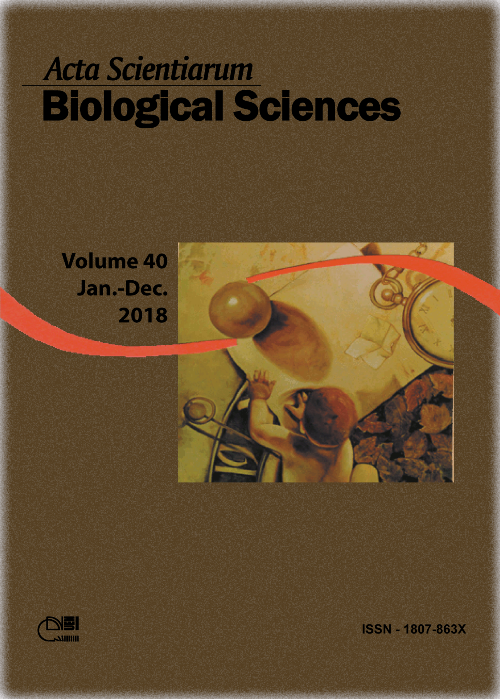<b>Filamentous fungi producing enzymes under fermentation in cassava liquid waste
Resumo
The conversion of agroindustrial residues by microorganisms has been explored from fermentative processes to obtain several bioactive molecules. The objective of this work was to isolate and select filamentous fungi present in cassava liquid waste for the production of amylase, carboxymethylcellulose (CMCase), pectinase and xylanase using the same residue as induction substrate in fermentative processes. A total of 65 filamentous fungi were isolated and qualitative tests indicated that approximately 86% of these strains were able to produce at least one of the enzymes and 32% capable of producing the four enzymes. Fermentation assays in cassava liquid residue-containing medium showed 6 fungal lines as potential enzyme producers. The maximum activities of pectinase, xylanase, amylase and CMCase were respectively observed at 96 hours of fermentation by the strain by the strain Aspergillus sp. B5C; at 120 hours (163.6 ± 0.13 nKat mL-1), by Aspergillus sp. B4I; at 144 hours (99.8 ± 0.24 nKat mL-1), by Penicillium sp. B3A; and at 48 hours (55.5 ± 0.21 nKat mL-1), by Aspergillus sp. B4O. These results suggest that cassava liquid waste was source of filamentous fungi producing amylase, CMCase, pectinase and xylanase, as well as a promising alternative substrate for bioprocesses aiming the production of enzymes.
Downloads
DECLARAÇÃO DE ORIGINALIDADE E DIREITOS AUTORAIS
Declaro que o presente artigo é original, não tendo sido submetido à publicação em qualquer outro periódico nacional ou internacional, quer seja em parte ou em sua totalidade.
Os direitos autorais pertencem exclusivamente aos autores. Os direitos de licenciamento utilizados pelo periódico é a licença Creative Commons Attribution 4.0 (CC BY 4.0): são permitidos o compartilhamento (cópia e distribuição do material em qualqer meio ou formato) e adaptação (remix, transformação e criação de material a partir do conteúdo assim licenciado para quaisquer fins, inclusive comerciais.
Recomenda-se a leitura desse link para maiores informações sobre o tema: fornecimento de créditos e referências de forma correta, entre outros detalhes cruciais para uso adequado do material licenciado.












1.png)




3.png)













